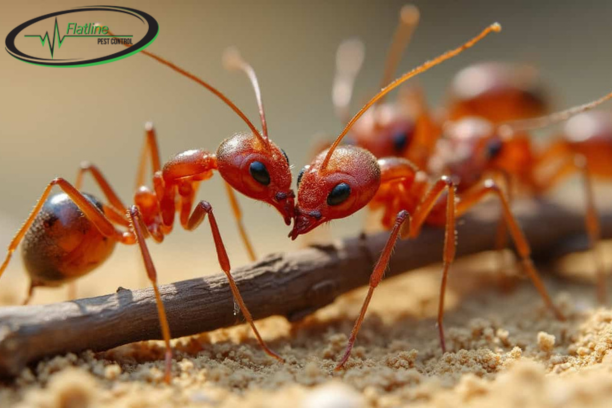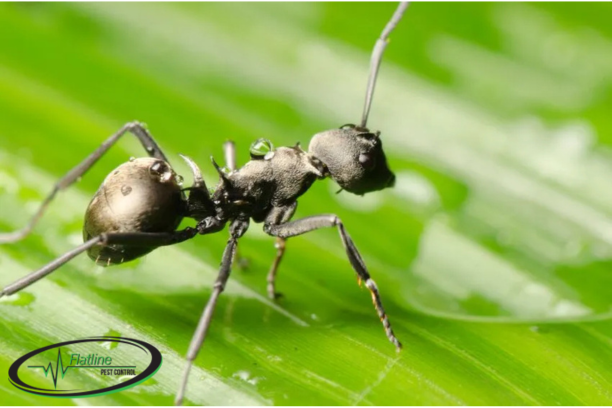Ants


Understanding Ant Colonies: What You Need to Know
Learn More About Ants
- Worker Ants are the backbone of the colony. Wingless and always busy, they take care of everything from feeding the Queen and the Young to nest structure and defense. You often see them when you're looking for food, but this usually becomes a problem in your home or business.
- The Queen is the center of the colony. Some species have a queen (called monoguin colonies), while others have a few queens (polygy). The Queen is born with wings that are washed away after pairing. Your main job? Lay eggs. In fact, one queen can produce thousands of descendants in her life.
- Male ants, also known as drones, are working. They are bigger than the workers and have wings, but do not help other tasks in the colony. After pairing, they usually die immediately. Your life may be short, but your role is extremely important to the growth of a new colony.
Frequently Asked Questions
Still have questions or can't find the answer you need? Give us a call at 405-466-8145 today!
Common Ants Found in Oklahoma Homes
At Flatline Pest Control, we’re experts in identifying and eliminating the types of ant infestations most common to Oklahoma homes. Here’s what you should know about the usual suspects.
Carpenter Ants in Oklahoma: Biology & Control
Carpenter Ant Description:
- These ants are notoriously difficult to eliminate and often require a combination of treatment methods for effective control.
- While the Black Carpenter Ant (Camponotus pennsylvanicus) is the most commonly seen species, we also come across red, brown, and multi-colored carpenter ants—especially in areas like Lake Arcadia, Guthrie, and rural parts of Oklahoma.
- Carpenter ants are polymorphic, meaning their size can vary significantly, even within a single colony. Don’t be fooled—smaller ants could still be carpenter ants!
- Carpenter ants are drawn to damp, decaying wood found around windows, decks, leaky roofs, and crawl spaces. This makes homes near wooded areas or lakes particularly susceptible to infestations.
- Unlike termites, carpenter ants don’t consume wood, but they tunnel through it, leading to considerable structural damage.
- Carpenter ants frequently establish satellite nests within your home, while the primary colony typically remains outdoors, often in tree stumps or firewood piles.
- If you notice sawdust combined with dead ant bodies near baseboards or windows, it’s a clear sign of carpenter ant activity.
- Once established indoors, carpenter ants can overwinter and remain active throughout the year, particularly if they find warmth and moisture.
Carpenter Ant Control Tips:
Remove woodpiles, old stumps, and damp vegetation around your foundation to reduce attractants for carpenter ants.
Seal leaks, repair rotting wood, and keep gutters clear to prevent moisture buildup near your home.
Trim trees and shrubs away from the structure—overhanging branches can serve as pathways for carpenter ants.
Our Flatline Solution:
Our process begins with a thorough inspection of your home, both inside and out, to identify both the primary and satellite colonies. We then use a blend of advanced bait systems and non-repellent liquid treatments that the ants unknowingly distribute throughout the colony, effectively eliminating them from within.
Carpenter ant infestations can be a significant issue, but with Flatline Pest Control, you can have peace of mind knowing your home is safe and protected.
Pavement Ants in Oklahoma: Biology & Control
(a.k.a. Sugar Ant or House Ant)
Pavement ants are one of the most common household invaders in Oklahoma. They’re small but persistent, and while they don’t cause structural damage, they can be a major nuisance in kitchens, bathrooms, and garages.
These ants often nest in cracks in sidewalks, driveways, patios, and even in slab foundations—something especially common in neighborhoods throughout Edmond, Stillwater, and Moore.
Colonies can contain thousands of workers and multiple queens.
Pavement ants sometimes establish indoor nests in walls, under floors, or inside insulation near heat sources—perfect spots during colder Oklahoma winters.
While they usually swarm in spring and summer, winged ants may appear year-round inside heated buildings.
They’ll eat just about anything: meat, sweets, pet food, bread, and even grease.
Typically brown to black in color, they range from 1/16 to 1/8 inch long and have slightly lighter-colored legs and antennae.
✅ Pavement Ant Prevention Tips:
Wash dirty dishes promptly and avoid leaving them in the sink overnight.
Sweep and mop regularly to keep crumbs and spills off the floor.
Avoid leaving pet food out all day, especially near walls or heat vents.
🧰 Our Flatline Solution:
We start with a detailed inspection to locate nests, entry points, and conducive conditions. Using the latest gel baits and non-repellent liquid treatments, we target the colony at the source. These modern products allow pavement ants to transfer insecticides throughout their nest, eliminating the problem entirely—not just the ants you can see.
🧯 Ant Problems? Let Flatline Take Care of It.
Whether you're dealing with destructive carpenter ants in your woodwork or annoying pavement ants in your kitchen, Flatline Pest Control has you covered. We proudly serve homeowners and businesses throughout central Oklahoma, offering expert diagnostics, proven treatments, and long-term prevention strategies.
📍 Serving Guthrie, Edmond, Oklahoma City, Norman, Stillwater, and surrounding areas.
Schedule your ant inspection today—let’s stop the invasion before it takes over.
Put a Contract Out on Pests!
Reach Out Today
At Flatline Pest, we’re always ready to take your calls! Give us a call or fill out the form below to contact one of our team members.
